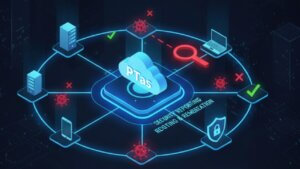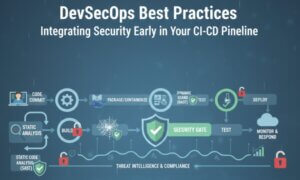Social media has revolutionized how people interact, share information, and stay connected. However, while these platforms offer numerous benefits, they have also become a fertile ground for cybercriminals engaging in social engineering attacks. Social engineering relies on psychological manipulation to deceive individuals into divulging sensitive information or taking actions that compromise security. Social media provides attackers with an abundance of personal data, which they exploit to craft convincing scams.
In this article, we will explore how social media is leveraged in social engineering attacks, the tactics used by cybercriminals, real-world case studies, and strategies to protect against these threats.
Social media is a goldmine for cybercriminals due to the sheer volume of publicly available personal information. Attackers exploit this data in several ways:
Gathering Personal Information – Social media profiles often contain names, birthdates, workplace details, and even answers to common security questions.
Impersonation and Identity Theft – Cybercriminals create fake profiles impersonating trusted individuals or organizations to manipulate victims.
Building Trust and Relationships – Attackers engage with targets over time to build trust before executing their scams.
Delivering Malicious Links and Phishing Attacks – Attackers distribute malicious links disguised as news articles, job offers, or exclusive content.
Common Social Engineering Tactics on Social Media

1. Phishing Scams
Phishing is a technique where attackers trick users into revealing sensitive information by pretending to be a trusted entity. Social media phishing often takes the form of:
Fake Account Notifications – Victims receive messages claiming to be from Facebook, Instagram, or LinkedIn, prompting them to log in through fraudulent links.
Malicious Direct Messages – Attackers send DMs containing malware-laden links.
Giveaway and Contest Scams – Scammers create fake giveaways asking users to enter personal details or banking information.
2. Pretexting and Impersonation
Pretexting involves fabricating scenarios to extract information. Attackers may:
Pose as HR personnel on LinkedIn to request job applicants’ personal details.
Impersonate friends or family members in distress to request financial assistance.
Act as customer support representatives from social media companies.
3. Baiting and Fake Offers
Baiting exploits human curiosity and greed. Examples include:
Offering free downloads of popular software that actually contain malware.
Promising job opportunities that lead to phishing websites.
Fake investment schemes on platforms like Twitter and TikTok.
4. Quid Pro Quo Attacks
In quid pro quo attacks, cybercriminals offer something valuable in exchange for information. Examples include:
“Free” online courses requiring users to provide sensitive information.
Fake security experts offering to “fix” a hacked account in exchange for login details.
5. Catfishing and Romance Scams
Romance scams have surged due to social media’s role in online dating. Attackers build emotional connections with victims before requesting money or confidential data.
How to Protect Against Social Media-Based Social Engineering Attacks
1. Strengthen Privacy Settings
Limit public access to personal information.
Restrict who can view your posts and profile details.
2. Be Cautious of Unsolicited Messages
Do not click on links from unknown sources.
Verify the legitimacy of any unexpected request for personal data.
3. Enable Multi-Factor Authentication (MFA)
MFA adds an extra layer of security, making it harder for attackers to gain unauthorized access to accounts.
4. Educate Yourself on Social Engineering Tactics
Regularly update your knowledge on social engineering trends and scams.
5. Verify Before You Trust
Cross-check information before sharing sensitive data.
Contact the person or organization directly through verified channels.
Conclusion
Social media is a double-edged sword. While it connects people and provides entertainment, it also presents opportunities for cybercriminals to execute social engineering attacks. By understanding the tactics used by attackers and implementing strong cybersecurity practices, individuals and organizations can safeguard themselves against these growing threats.
Remaining vigilant, using privacy settings wisely, and verifying suspicious interactions are critical steps in protecting against social media-based social engineering attacks. In an increasingly digital world, awareness is the key to security.
Why Businesses Trust SecureMyOrg for Comprehensive Network Security
At SecureMyOrg, we uncover and fix all possible security vulnerabilities of mobile and web, while providing solutions to mitigate risks. We are trusted by renowned companies like Yahoo, Gojek and Rippling, and with 100% client satisfaction, you’re in safe hands!







Some of the things people reach out to us for –
- Building their cybersecurity program from scratch – setting up cloud security using cost-effective tools, SIEM for alert monitoring, building policies for the company
- Vulnerability Assessment and Penetration Testing ( VAPT ) – We have certified professionals, with certifications like OSCP, CREST – CPSA & CRT, CKA and CKS
- DevSecOps consulting
- Red Teaming activity
- Regular security audits, before product release
- Full time security engineers.
Relevant Posts

AI-Powered Phishing Emails: 7 Ways to Spot and Stop Them Before They Strike
Penetration testing as a service (PTaaS) lets experts simulate real attacks to uncover vulnerabilities before hackers do. This guide explains the process, benefits, and costs, helping businesses strengthen defenses with predictable, ongoing security checks.

Why Regular Penetration Testing is Essential for Modern Companies
Penetration testing as a service (PTaaS) lets experts simulate real attacks to uncover vulnerabilities before hackers do. This guide explains the process, benefits, and costs, helping businesses strengthen defenses with predictable, ongoing security checks.

What Is Penetration Testing as a Service?
Penetration testing as a service (PTaaS) lets experts simulate real attacks to uncover vulnerabilities before hackers do. This guide explains the process, benefits, and costs, helping businesses strengthen defenses with predictable, ongoing security checks.

How To Inspect Encrypted Traffic Without Breaking Privacy
Network administrators face a challenge: securing systems while respecting privacy. This guide explains how to inspect encrypted traffic without breaking privacy using metadata, anomaly detection, and machine learning ensuring visibility, compliance, and trust.

How to Audit Infrastructure as Code (IaC) for Security Vulnerabilities
Discover how to audit Infrastructure as Code (IaC) for security vulnerabilities with this practical guide. Learn to scan IaC files using tools like Checkov, fix issues like exposed resources, and integrate audits into CI/CD pipelines. Protect your cloud systems from misconfigurations and ensure compliance with clear, actionable steps.

DevSecOps Best Practices: Integrating Security Early in Your CI/CD Pipeline
This article provides a practical guide to embedding security into every stage of your CI/CD pipeline. Learn core DevSecOps best practices like SAST, DAST, dependency scanning, secrets management, and compliance automation to catch vulnerabilities early, foster a culture of shared ownership, and build a secure-by-design development process that accelerates release cycles.

